
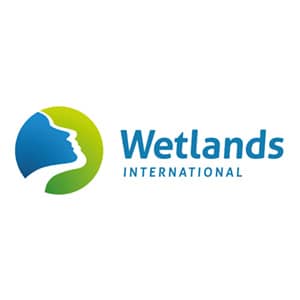
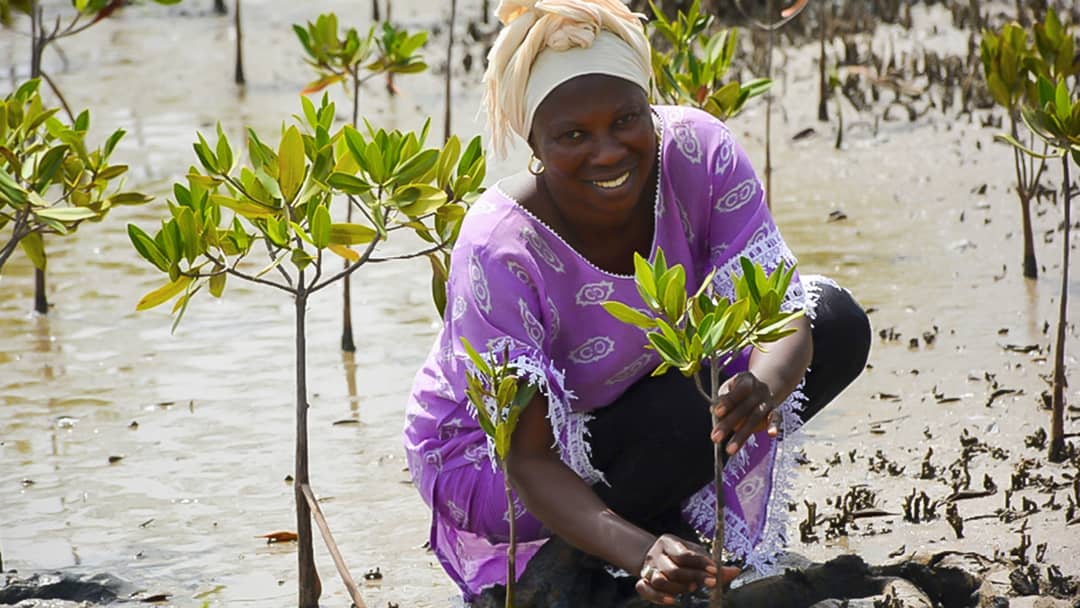
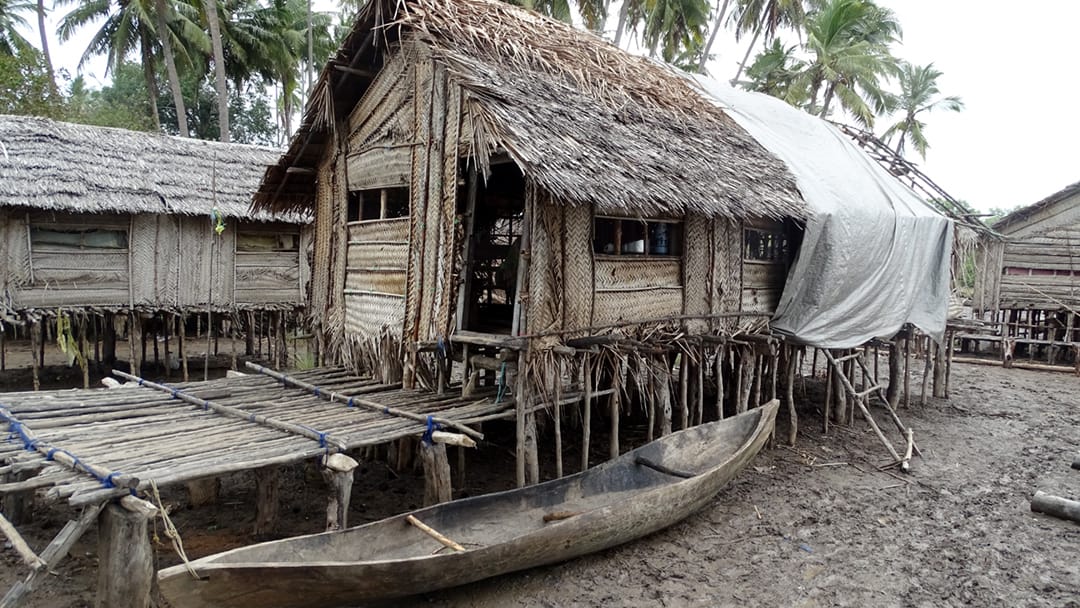

Safeguarding mangroves along the West and East African coasts
Since 2017
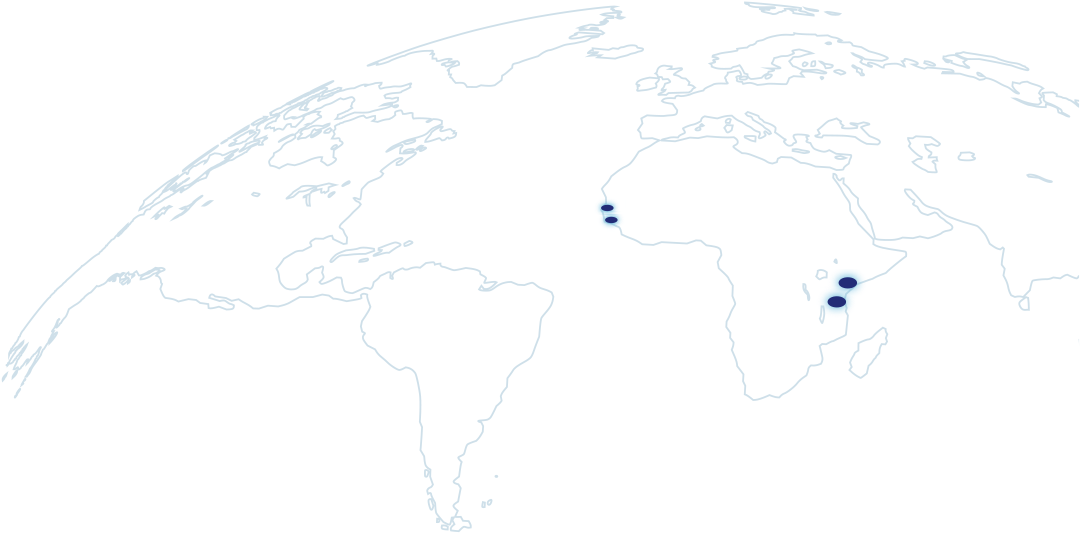
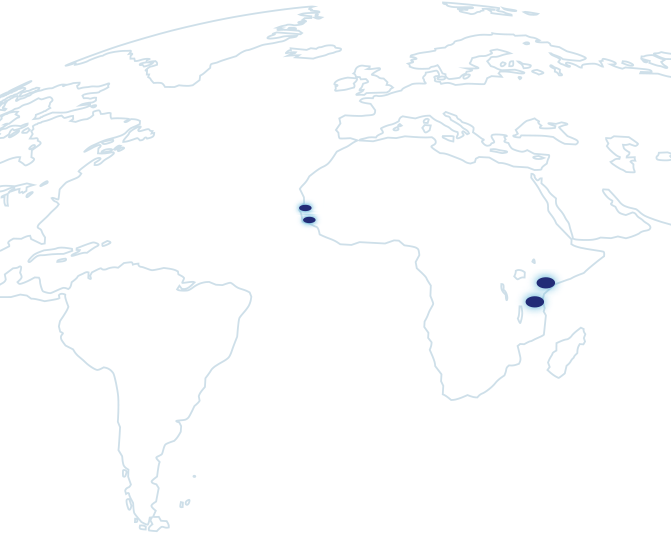
in cooperation with Wetlands International Eastern Africa and
Wetlands International West Africa Coast and Gulf of Guinea
The African mangroves, which constitute 19% of global coverage, provide millions of people with food, clean water and raw materials. Healthy mangroves harbour many iconic species, such as manatees, sea turtles and millions of migratory birds. These unique wetlands act as buffers against storms, tsunamis and sea-level rise, making them vital for coastal communities threatened by climate change.
The Saloum Delta on Senegal’s Atlantic coast is a mangrove ecosystem with a rich biodiversity. More than 100,000 people depend on mangroves for their livelihoods. They share this habitat with hundreds of thousands of birds, dolphins, the West African manatee and various species of sea turtles.
With an area of almost 53,000 hectares, the Rufiji Delta in Tanzania hosts East Africa’s largest concentration of mangroves. Around 42,000 people live here, depending principally on agriculture and fishery. The Delta is home to a wide diversity of flora and fauna and is a temporary base for migratory water birds, in flight from the European winter.
In Kenya, Lamu – a world heritage site – and the nearby Tana delta, jointly represent 40,000 hectares. Both sites are of disproportionate importance as nursery grounds for fish and as havens for critical biodiversity such as the endemic Tana River red colobus monkey.
The Cacheu and Cantanhez national parks and their buffer zones in Guinea Bissau represent 74,000 and 34,000 hectares respectively. These areas have a unique biodiversity, host internationally significant populations of migratory waterbirds and are a lifeline for both fisherfolk and farming communities.
This program is all about creating long-term environmental, economic and social sustainability. To reach its goals the program focuses on:
• Empowering local communities to manage their natural mangrove resources more sustainably by raising their awareness about mangrove values, improving their financial capacities, offering them training on management plans and working with them to restore degraded areas;
• Improving local people’s livelihoods by working with them to develop new, sustainable sources of income such as less nature damaging oyster production techniques;
• Adopting integrated management plans for Saloum & Rufiji by all relevant stakeholders.
The ambition is to expand the program in the coming years to more countries on both coasts.
Safeguarding and restoring mangrove ecosystems in Africa for the benefit of nature and people and protecting them against the dangers of climate change.
Including:
Photocredits
– Rufiji Delta house © Joy Kivata